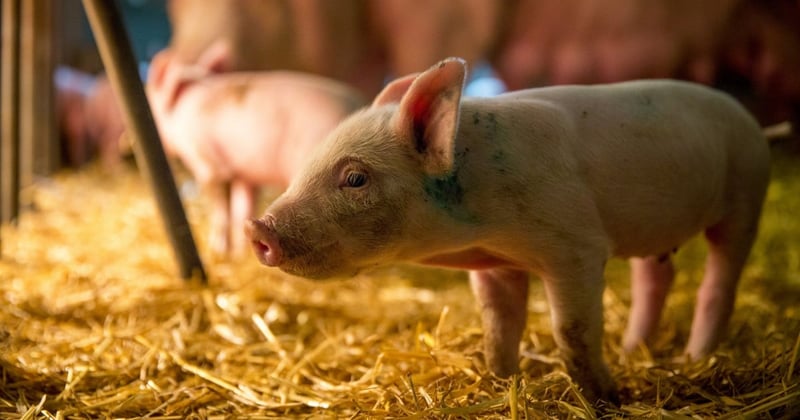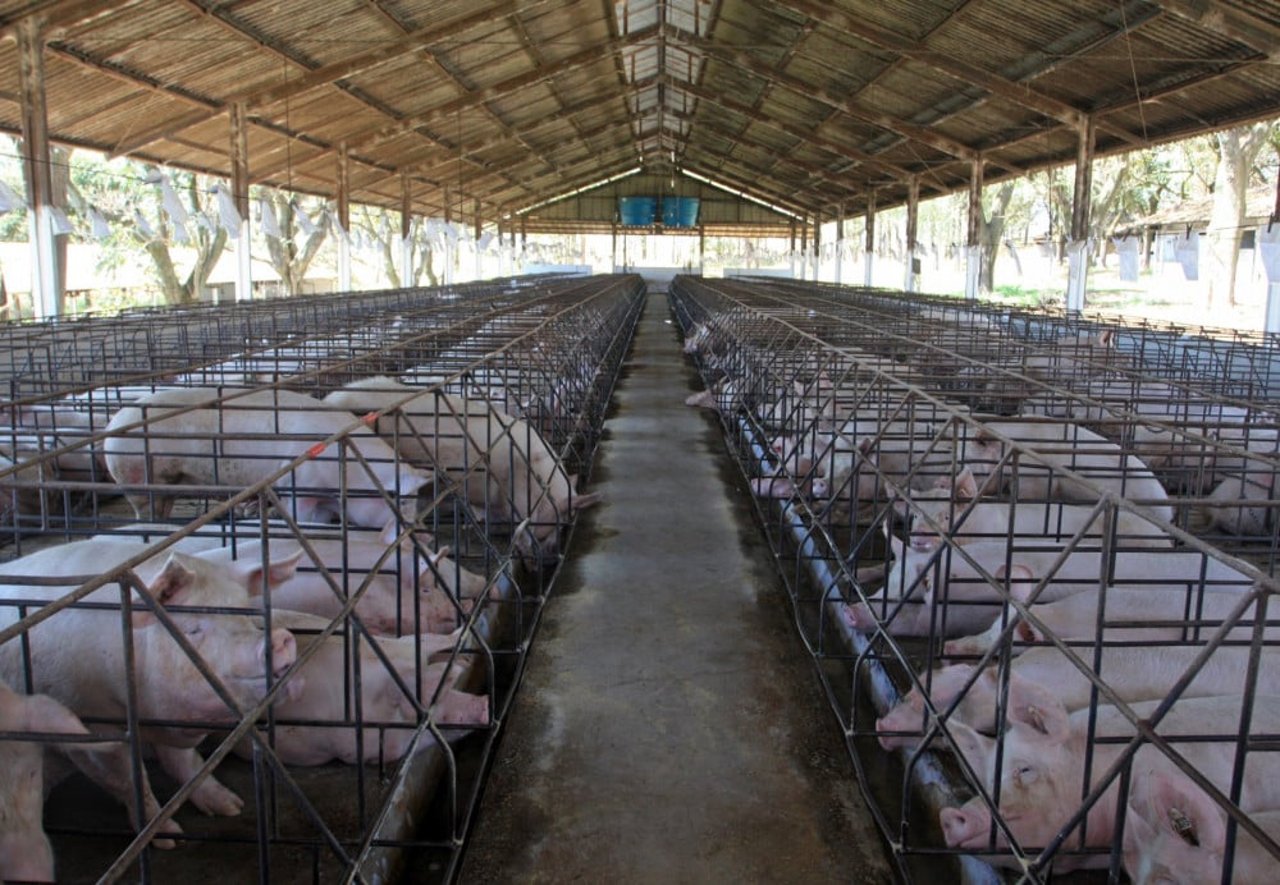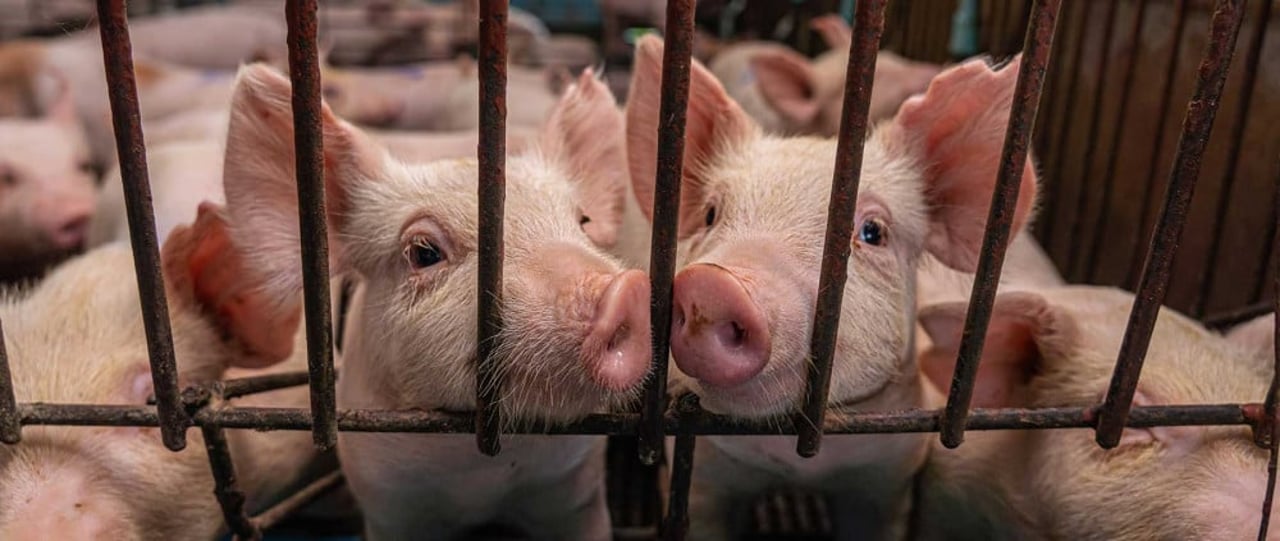
While turkey is the “traditional” Thanksgiving main, ham is also widely eaten on this day in America. Here’s why you should opt out of eating it.
Thanksgiving is a day to reflect and be grateful. It’s a time to celebrate all that we have. Sadly, however, for millions of animals, its traditions mean suffering and death.
More than 46 million turkeys are consumed each year on Thanksgiving, nearly all of them coming from cruel factory farms, where turkeys suffer horrific abuse.
But another species exploited for food also suffers for our holiday tables—pigs. Each year, Americans consume over 24.75 million pounds of bone-in ham. Like turkeys, pigs on factory farms suffer immensely their entire lives and on the slaughter line.
Here are five reasons to ditch the ham this year.
Pigs in gestation crates on a factory farm.
1. Gestation Crates
Mother pigs on factory farms are continuously confined in gestation crates, cages barely bigger than their own bodies, on filthy concrete floors. These pigs endure mental suffering, are at higher risk of illness, muscle weakness, or injury, and are unable to turn around or lie down comfortably. These inhumane cages have been defended by the National Pork Producers Council, which stated the following:
“So our animals can’t turn around for the 2.5 years that they are in the stalls producing piglets…I don’t know who asked the sow if she wanted to turn around.”
2. Mutilations
In their first week of life, piglets are forced to endure painful mutilations without any anesthetic or painkillers. This includes having their tails—filled with nerve endings—cut off, ears notched, teeth clipped, and castrated.
3. Thumping
Incredibly inhumane, thumping is when a factory farmer takes a piglet who is sick, injured, or otherwise “non-viable” and slams them headfirst into concrete until the piglet dies. This continues to be a widely used tactic in American factory farms.
Pigs in an enclosure on a factory farm.
4. Inhumane Transport
In order for farmed animals to be sent from a factory farm to a slaughterhouse, they’re loaded onto metal transport trucks and driven hundreds, sometimes thousands of miles to reach their final destination. The animals in these trucks are not given food or water during this ordeal, are completely exposed to the elements, and are forced to stand in their (and other animals’) waste and urine.
Because they’re transported in metal trucks during extreme heat or freezing weather, it’s expected that some animals will die from heat exhaustion or freeze to death before reaching the slaughterhouse. Some pigs have even been frozen to the side of the truck, with their skin ripped off as they’re hurried out and sent to slaughter.
A 2006 industry report stated that approximately one million pigs die in transport yearly.
5. Slaughter
Pigs sent to slaughter are killed in just the first six months of their lives. Often after brutal transport without food or water, the pigs collapse and struggle to breathe while workers push, kick, or hit them in attempts to get them to walk.
While pigs are supposed to be “stunned” or shot directly in the head before their throats are slit, many are improperly stunned and are conscious and feel pain during the entire slaughter process. This slaughter process includes a scalding tank, much like the ones chickens go through, in order to remove their hair and soften their skin. Because they have been improperly stunned and usually do not bleed out in time, slaughterhouse workers have reported that many animals squeal until their last breath.
We can live our values of kindness and compassion by making new traditions this year and leaving all animal products off our plates. Check out these nine Thanksgiving main dishes everyone will love.

